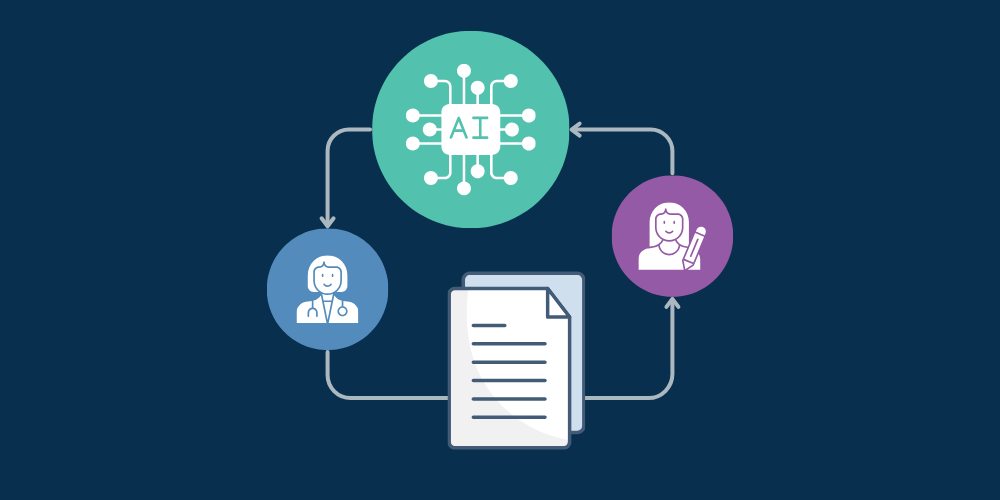
As the life sciences industry evolves, medical affairs teams are left wondering why software solutions haven't kept pace with their needs. Despite increased competition in the field, developers seemingly fall short in coping with the whirlwind of information assets in as highly regulated industries as the life sciences.
"We're well into the 2020s, but medical affairs departments are still relying heavily on brute force communication," said Michelle Chernock, founder and CEO at Leaders in Medical Affairs. "They still have too many files stored on desktops, constantly struggle with version control, and rely on relationships to ensure processes are completed and that information flows to the right place at the right time."
Chernock stressed that the lack of centralization of processes is a "major obstacle" within medical affairs. Pharma professionals often resort to clunky manual tools that can be redundant and, at worst, unable to integrate with each other when tasked with updating or streamlining processes for functions like:
- Publication management
- Medical, legal, and regulatory reviews
- Grants committee work
- Deck development
- Training
The three typical approaches to medical affairs software
Software for medical affairs departments often boils down to three options: utilizing large, expensive, and complex software systems, cobbling together multiple smaller tools, or outsourcing their entire medical communications workflow.
Each of these paths comes with significant drawbacks, leaving teams stuck between complexity and chaos. Let's explore each one:
1. Large, expensive, and complex software
 Enterprise-level software solutions like iEnvision and PubStrat represent one end of the spectrum.
Enterprise-level software solutions like iEnvision and PubStrat represent one end of the spectrum.
These platforms are comprehensive and robust, offering features for content creation, regulatory review, submission, security, compliance, and scalability. However, their benefits are often overshadowed by their high costs and steep learning curves, requiring extensive user training.
Additionally, their rigid structures may not adapt well to specific workflows, and their limited integration capabilities can create data silos, leading to inefficiencies. These vendors also often lack a partnership approach, providing minimal support beyond standard service agreements.
2. Multiple smaller tools cobbled together
 On the other end of the spectrum, some teams opt for a piecemeal approach, combining multiple specialized tools for different tasks. This approach might involve using Veeva for document management, separate software for reference management, and manual tools for collaboration.
On the other end of the spectrum, some teams opt for a piecemeal approach, combining multiple specialized tools for different tasks. This approach might involve using Veeva for document management, separate software for reference management, and manual tools for collaboration.
While this method can reduce costs and leverage familiar tools, it introduces significant inefficiencies and risks. Manual data transfer, juggling multiple systems, and frequent context switching can be time-consuming and error-prone.
Additionally, the lack of centralization hinders collaboration and visibility, and integrating these disparate systems can be complex and expensive, often leading to incomplete solutions that fail to scale efficiently.
3. Outsourcing all medical communications
 Outsourcing medical communications to specialized agencies is another alternative. These agencies bring expertise in scientific writing, regulatory compliance, and effective communication with healthcare professionals and patients.
Outsourcing medical communications to specialized agencies is another alternative. These agencies bring expertise in scientific writing, regulatory compliance, and effective communication with healthcare professionals and patients.
Outsourcing can be cost-effective, scalable, and efficient, allowing organizations to focus on their core competencies.
However, it also involves loss of control over project timelines and communication styles, potential challenges in maintaining internal knowledge, confidentiality concerns, and integration issues between internal and external teams.
Real-life case study on the challenges of medical affairs software
Peter Herout experienced these challenges firsthand as Associate Director of Scientific Communications at Esperion Therapeutics, a company focused on cardiovascular disease prevention medication. After first joining the company, Herout encountered significant issues with their publication management software, including a steep learning curve for users.
When there are many complex steps involved to complete a project, the software Esperion was using had employees struggling to learn "on the job," making processes time-consuming from start to finish. External authors often complained about the system timing out during reviews, frequent logins, and mandatory password changes."The software was also slow – maybe because of the complexity of it, or the interface," added Herout. "It’s not efficient to wait for the program to respond to searches or uploads."
To top it off, the software provider offered poor customer service and slow response to problems encountered with the system, causing further delays.
"Clunky systems that are not user-friendly and require too much non-productive effort lead to internal users delaying or avoiding tasks," Chernock explains. "In some cases, data in disconnected software systems can become unreliable (e.g. a zip code is changed in one system and not in others). This lack of data integrity adds to the frustration of users who can no longer rely on their software as a source of truth."
In the case of Esperion, Herout sought a more user-friendly interface that would guide users through workflows with clear prompts. They also desired secure links that would allow reviewers to access tasks without the constant need to log in.
For Herout, the ideal solution should act as a central hub for all communication activities, fostering collaboration and efficiency while being adaptable to the specific needs and standard operating procedures (SOPs) of each organization.
"I wanted a solution within which multiple different types of reviews can occur," Herout explained, "whether it be for publications, standardized response documents, investigator-initiated study protocol review, etc."
It would also need to balance the powerful functionality of enterprise systems with the user-friendliness of smaller tools.
"It primarily comes down to resources/cost and are all of the components or functions applicable to the company’s needs," Herout said. "A lot of bells and whistles may not be needed and complicate workflow."
Finding a happy medium
It’s clear that the current landscape of medical affairs software is fraught with challenges. Teams often must choose between expensive, complex systems or inefficient, piecemeal solutions. Outsourcing is another option but comes with its own set of issues.
The industry is ready for "happy medium" software solutions that offer robust functionality while remaining user-friendly and adaptable to specific organizational needs. These solutions would not only streamline operations but also enhance collaboration, efficiency, and overall productivity in medical affairs.
When Esperion Therapeutics began evaluating options to replace their publication management software, they focused on five key selection criteria that were crucial for sourcing a "happy medium" solution. This criteria was instrumental in guiding their decision to ultimately select PubPro.
Let’s explore those five criteria:
1. Usability
Esperion’s previous system was cumbersome and difficult to navigate, leading to inefficiencies and frustration among users. PubPro was chosen for its intuitive interface, which minimized the learning curve and allowed users to quickly adapt to the new system.
Features like role-specific dashboards and deep linking, which enables secure, password-free access for external stakeholders, were particularly appealing. This user-friendly design was critical in streamlining Esperion’s processes and reducing the time and effort required to manage their publications.
2. Configurability
The inability to customize their previous software to fit Esperion’s specific SOPs was a major pain point. PubPro stood out for its high level of configurability, allowing Esperion to tailor the system to their unique workflows without the need for extensive development work. This flexibility ensured that the software could evolve alongside Esperion’s needs, making it a long-term solution that could grow with the company.
3. Integration capability
Esperion needed a solution that could seamlessly integrate with their existing tech stack. PubPro’s strong integration capabilities addressed this need, enabling a more cohesive and efficient workflow. By eliminating data silos and reducing manual data entry, PubPro significantly improved the overall efficiency of Esperion’s publication management process.
4. Reporting and analytics
Effective tracking and reporting were essential for Esperion to monitor project progress and ensure compliance. PubPro’s robust analytics tools provided real-time data and customizable reports that allowed Esperion to maintain visibility over their publication processes. This capability was crucial in helping them identify bottlenecks, optimize workflows, and make data-driven decisions.
5. Responsive support
A key factor in Esperion’s decision to move away from their previous vendor was the lack of responsive customer support. PubPro, on the other hand, offered a high level of customer service, including quick response times and effective problem resolution. This support was vital during the implementation of PubPro, which was completed in under three months, and continues to be an important aspect of Esperion’s positive experience with the platform.
Striking the right balance, setting a new standard
Esperion’s publication management software choice exemplifies the "happy medium" that medical affairs teams have been seeking — a solution that not only keeps pace with the evolving demands of the industry but also effectively manages the complexities of highly regulated environments like life sciences. By addressing the shortcomings of traditional software options, Esperion enhanced usability, configurability, integration, and support.
As the industry continues to evolve, Esperion’s story stands out as a model for how software can and should meet the needs of modern medical affairs teams.
Level up your medical affairs team
Want to learn more about how PubPro transforms publication management processes? Read Esperion’s full customer story or contact BP Logix to request a free PubPro demo.





